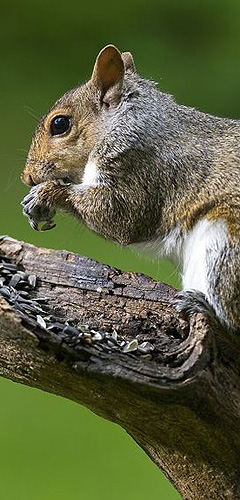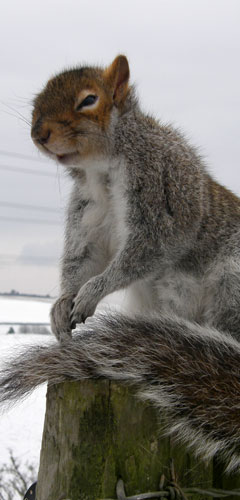- PEST PROBLEMS? CALL US NOW!
- 01865 362053 / 07802 485384
Pest Control - Squirrels
(Sciurus Carolinensis)
 Squirrel control is necessary due to the extensive damage they can cause in domestic, commercial and agricultural environments. Hawthorn Pest Control will work with you to remove existing squirrels and implement a control programme to help minimise their return.
Squirrel control is necessary due to the extensive damage they can cause in domestic, commercial and agricultural environments. Hawthorn Pest Control will work with you to remove existing squirrels and implement a control programme to help minimise their return.
Squirrel control and management is carried out by our trained pest controllers. There are a number of effective methods that can be implemented to get rid of squirrels. However, our pest controllers find that using traps is the most effective and humane method for their removal. Many people ask how they can stop squirrels causing damage to their property, although like any pest control method, the most effective means is to first remove any existing squirrels, followed by a planned squirrel control programme.
The grey squirrel is a common resident of parks and gardens, mixed woodland and, typically, anywhere where there are trees. The grey squirrel was introduced from the US to the UK between 1876 and 1929. It is common throughout England and Wales, south of Cumbria and locally in Scotland.
The appearance of the grey squirrel is typically as the name suggests, this species has a grey back and tail with reddish flanks. The tail of a squirrel is typically 19 – 25 cm long.
The squirrel has 3 – 4 litters per year and each litter tends to consists of 3 or 4 young. However, the average can vary from 1 – 8. Squirrels typically breed in February or March and again in August or September. The squirrel builds its nest out of twigs and leaves in takes up occupation in the forks of trees or tree hollows known as dens.
A squirrel reached maturity in 10 to 12 months and has an average life span of 2 years.
The diet of the squirrel tends to consist of vegetation including acorns, beechmast, tree shoots, flowers, nuts and also fruits, roots and cereals. It also strips the bark from trees and eats the sappy tissue beneath. The squirrel also occasionally feeds on insects and birds’ eggs. A typical squirrel will eat 40 – 80g per day, and caches surplus nuts, mast and cones in scattered sites 2 – 5 cm below soil or in tree hollows.
The grey squirrel is a pest of plantations, where they cause serious damage to trees by stripping back the bark from tree trucks. A number of deciduous tree species of various ages may be attached: beech and sycamore are most often severely damaged.
In residential gardens squirrels take fruit such as strawberries, apples and plums, raid the nests of small birds, raid bird tables and nut feeders and dig holes in the lawn to bury their food. They can also access roof spaces of houses by climbing the walls or jumping from nearby trees. Once inside the house they chew woodwork and ceilings, strip the insulation from electrical wiring which could lead to fires and tear up loft insulation for nest building.
The most obvious sign of squirrels is the sight of the animals themselves as they are active during the day. They tend to regularly visit the same gardens looking for food and it is unusual for the squirrel to show any fear of people. Other signs of their presence include pine cones which have been stripped to extract the seeds, nuts which have been gnawed, bird feeders being rapidly emptied and bark being stripped from trees. Often squirrels will take their food to a particular tree stump or fence post to eat it and the remains are scattered on the ground below.
Because of the damage they can cause, it is sometimes necessary for squirrels to be controlled. Hawthorn Pest Control will assess the presence of squirrels and the damage that is being caused before putting forward the most appropriate recommended method for control.


